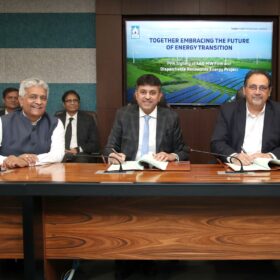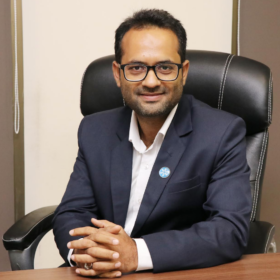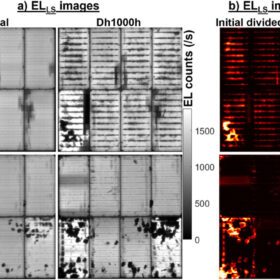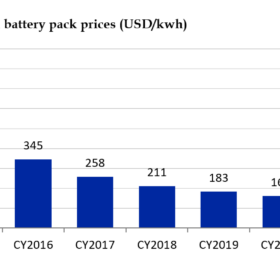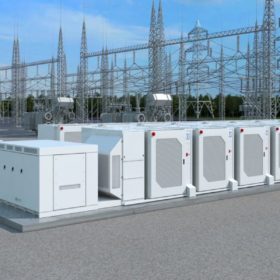The ISA convened its Fourth Meeting of the Regional Committee for Europe and the Others Region in Brussels this week, with ministerial and senior government representatives from 18 countries in attendance to chart the course for the sustained and equitable roll-out of solar the Europe region and beyond.
The Meeting proceedings featured Member Country representatives addressing various issues related to International Solar Alliance’s programmatic support towards solar deployment. These programmes are crucial in accelerating the adoption and implementation of solar energy solutions. Furthermore, the Meeting discussed the progress and impact of ISA flagship initiatives such as STAR-C, SolarX Startup Challenge, and Solar Finance Facility, which are ISA’s key interventions in driving capacity-building, innovation, and investment in the solar sector.
H. E. Mr Dan Jørgensen, Minister for Development Cooperation and Global Climate Policy, Denmark & the Regional Vice President for the ISA’s Europe and Others Region, in his opening address, noted, “We share a joint ambition. We all want to rapidly accelerate the transition to a clean energy economy. We all want to promote the power of solar energy. The urgency is clearer than ever. We know how much is at stake, our climate, our security, and our welfare; more finance is needed if we are to have global climate action to limit global temperature warming. Different actors must come together to mobilise finance at an immense scale, moving us from billions to trillions.” Commending ISA’s work, he added, “I wish to complement the work that is so important – undertaken by ISA and its Member Countries in the past year to promote this even further. Being based in India, ISA is able to draw on the remarkable achievements made for the Indian population. In only 20 years, India has brought electricity to more than 700 million of its citizens, an astonishing accomplishment. Denmark entered into a green strategic partnership with India in 2020, and one of the key areas for cooperation was Denmark entering the International Solar Alliance. I hope we can drive our cooperation.”
Dr Ajay Mathur, Director General, ISA, said, “The Europe region is crucial for the International Solar Alliance. A massive scaling-up and speeding-up of solar across power generation, industry, buildings and transport will reduce energy prices and decrease the EU’s dependence on imported fossil fuels. With EU’s strengthened participation in ISA, and the potential to significantly contribute to the global fight against climate change financially, technologically, and collaboratively will accelerate our efforts.” He highlighted that this Region has taken the leadership in accelerating energy transition and added, “I also look forward to countries from the Region that are not members joining the ISA in the near future and make solar the energy source of choice. It will support EU’s vision of Fit for 55 and the enhanced renewable targets for 2030. The impact of Europe’s involvement in ISA goes beyond the Region, and more specifically in under-served areas. We have made great strides by leveraging Europe’s expertise and resources and can further accelerate action in Africa, Small Island Developing States (SIDS) and least developed countries (LDCs).”
In his remarks, Matthew Baldwin, Deputy Director-General, DG ENER, European Commission, highlighted, “We want to get from 136 GW Installed PV in EU 2020 to 320 by 2025 to 600 gigawatts by 2030. This mirrors, in fact, and I think it then exceeds what the IEA has called for as a steppingstone in terms of net zero emissions by 2050. We’ve taken this target consciously. It’s ambitious. It’s going to mean a big drive. And how are we going to do it quickly? Four initiatives to try to achieve it. Firstly, by promoting a massive PV deployment on buildings. Often the quickest way to go is via the European Solar Rooftops initiative, secondly, by making permitting procedures for solar installation shorter and simpler. I don’t think permitting has been such a difficult issue as it has been for wind power, but it’s still a real problem, and we need to address it. Thirdly, by ensuring the availability of an abundant and skilled workforce. With producing and deploying solar energy right across the EU. Fourthly, by launching an European solar PV industry alliance to develop further this notion of the resilient industrial value chain, particularly in the PV manufacturing sector, to really seize this huge industrial opportunity offered. In the booming demand for solar energy, we can do this, and we must do this. It’s about Europe’s energy security. It’s about Europe’s energy autonomy and independence, and nothing speaks to that better, I think, than solar.”
Earlier Co-President of ISA, H.E. Ms Chrysoula Zacharopoulou, Minister of State for Development, Francophonie, and International Partnerships, highlighted the priorities of the Alliance that France particularly supports. “Our contribution of 1 million Euros to the ISA STAR-C programme allows us to deliver technical assistance in three countries: Senegal, Papua New Guinea, and Bhutan. A solar academy will be established, and local coordinators are being recruited to work locally with authorities and project sponsors. I call on ISA members to join us in this effort to build this flagship initiative.” ISA’s Solar Technology Application Resource Centres are linking ISA Member Countries and the global research and innovation ecosystem to leverage technical expertise and resources for accelerated deployment of solar energy in ISA Member Countries.
Meeting delegates also provided feedback and suggestions through the thematic session deliberations hosted during the proceedings to ensure effective implementation and maximise the impact of ISA’s efforts. Three thematic sessions were hosted on 22 and 23 June 2023, spot-lighting ISA’s new initiative, Solar Finance Facility, capacity-building hub, the Solar Technology Application Resource Centres (STAR-Centres), and the subject of solar manufacturing – an ISA focus area as an international organisation partner to the 2023 G20 Presidency.
The ISA has done significant research in understanding solar, which has resulted in their latest offering — the Solar Finance Facility. The Solar Finance Facility is being built to enable solar technologies’ growth in underserved African geographies. The Facility is seeking private capital from donors worldwide to achieve this goal. It will operate through three distinct funds: the payment guarantee fund, the insurance fund, and the investment fund. In Africa, project proposals can acquire payment guarantees or partial insurance premium from these funds. The payment guarantee fund ensures reliable payment guarantees, while the insurance fund serves to mitigate project risks. Additionally, the investment fund offers technical assistance to address regulatory gaps. By attracting investments, fostering project development, and mitigating currency risks, the Solar Finance Facility aims to positively transform solar energy adoption and development throughout Africa, where the cumulative renewable energy investment in sub-Saharan Africa over the last two decades has just been 2 per cent.
Ms Anita George, Co-Founder, Edhina Capital, who is supporting ISA in building the structure of the Solar Finance Facility observed, “The International Solar Alliance has been working with many stakeholders to promote and deploy solar energy across emerging markets. The Solar Finance Facility will bring the much-needed acceleration for addressing a solution for climate change and enhancing energy access for all. It will alleviate some of the critical problems that impede the growth of solar energy and will become a key component of the entire renewable energy financing ecosystem. A mix of public and private capital and a combination of global and local expertise will bring in the much-needed agility with risk appetite to enable the rollout of this Facility across the world.”
The meeting focused on the solar PV supply chain’s extreme concentration in one geographical area that has choked supply chains in the past and presents multiple geopolitical and economic risks. The development of localised solar PV manufacturing across the globe would bring advantages to the entire sector, from end customers to project developers and public authorities. Furthermore, to achieve net zero targets, up to 1900 GW per year must be manufactured by 2030 per the scenario in ISA’s report on ‘Building Resilient Solar Supply Chains’, which the delegates at the Meeting previewed. $150 billion in investments in solar manufacturing are required by 2030 to develop the necessary capacity. ISA and Becquerel have collectively in the Report identified specific value chain steps, such as module and inverter assembly, that can be developed relatively quickly and cheaply for as low as $5 million.
Dr Ajay Mathur called on the European Region’s leadership pivotal in driving the transition towards clean energy sources by “strengthening supply chains and collaboratively enhancing the resilience of solar photovoltaic manufacturing”. He said, “Different countries and regions will have to assess the appropriate role they will play in the solar ecosystem. In the Report, we have proposed a framework to help identify the most appropriate role for a given country/ecosystem. Several policy levers exist, direct and indirect, and upstream and downstream measures can be taken”. The Report also showcases successful global case studies and lends an overview of the potential policy steps.
Mr Philippe Macé, Partner, Becquerel Institute, sharing his views, remarked, “The solar PV supply chain has never been so concentrated, and overcapacity is looming at all steps as massive new production capacities are coming online. While some will be pleased by the downward pressure it puts on prices, it also makes the entire sector more vulnerable than ever. To improve the supply chain’s resiliency, local production is a must. Plus, this can bring multiple additional benefits, such as jobs or local economic value creation. This report quantifies the potential for local solar PV production across the world and gives clear recommendations on how to achieve it.”
“Solar supply chains will become resilient by boosting new generations of solar cells and modules with low-cost potential upon scaling, noted Prof. Gerard de Leede, Chief Technology Officer, Solarge. He further said, “At Solarge we are ramping up our lightweight, ultra-low carbon solar module production as we see a large demand.”
The 2022 ISA World Solar Investment Report in its findings had reported that the various uncertainties of the global energy landscape had highlighted the need for countries to become self-dependent in terms of energy requirements and increase penetration of solar energy adoption, with solar energy being abundant and cheaper than other non-renewable forms of energy. Of the projected investments required, solar energy is expected to draw the most investments as solar and wind technologies together are expected to meet 90% of the electricity needs by 2050. The Fourth Meeting of the ISA Regional Committee for Europe and the Others Region provided an important platform to take stock of where the Region sits in the energy transition journey and how to identify linkages among ISA Member Countries to help aggregate demand and determine which countries are best suited for which steps of solar deployment.
The ISA Country Partnership Framework enables a strategic roadmap for collaboration between ISA and its Member Countries, facilitating the development of solar projects and promoting sustainable energy practices. Private sector engagements were also underlined, focusing on ISA’s Corporate Advisory Group. This platform enables collaboration between the private sector and ISA, fostering investment, technology transfer, and knowledge sharing. The Meeting proceedings acknowledged the valuable contributions of the private sector in advancing solar energy deployment and emphasised the need for continued engagement. The Meeting deliberations underlined the importance of strengthening and leveraging partnerships at various levels to achieve collective solar energy goals.

